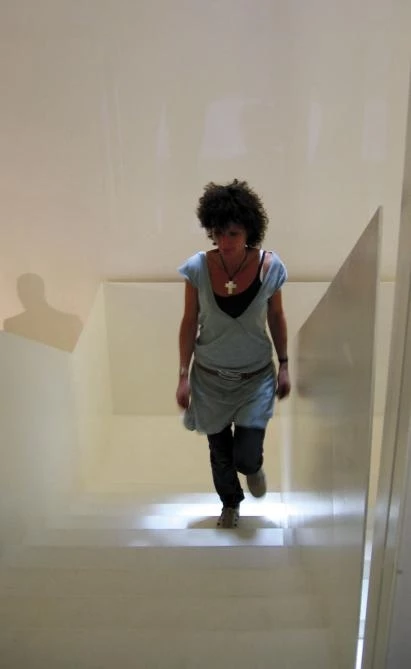June 10, 2005 The great architect Louis Kahn once said, "A room is not a room without natural light. Natural light gives mood to space by the nuances of light in the time of the day and the seasons of the year as it enters and modifies the space." The ambience of a sunlight-deprived room can now be significantly enhanced thanks to an ingenious new sunlkight-transportation technology developed by Swedish lighting design company Parans. The novel approach overcomes the provision of natural light to rooms in a building that would otherwise be deprived by collecting sunlight with outdoor light-collecting SkyPort panels, transporting the light by fibre-optic cable known as SunWire and delivered to the required spaces via light emitting luminaries known as Bjork.
The Gothenburg-based company was founded in 2003 by a team of architects, researchers and engineers from Chalmers University of Technology and their first product looks set to give the company a global profile by overcoming a global problem – making all the rooms in a building inhabitable and comfortable, not to mention beautiful and energy-efficient.
Parans’ luminaires lighting fixtures are designed to give a mixture of parallel light beams and ambient light, just as “when the sun strikes through the foliage of a forest.” This is the reason why the patent-pending luminaires are named Björk, which is Swedish for birch tree.
By installing Parans system, inhabitants will be able to monitor the weather and sunlight conditions outside in the absence of windows or skylights, re-establishing a connection with the outside environment.
The luminaire Björk comes in three geometrical variations in order to give optimal illumination to different rooms. The patented SkyPort can be mounted on roofs or facades, focusing incoming sunlight into optical fibres. These fibres are bundled into a flexible cable with a diameter of three cm, permitting transportation of the light up to 15 metres, or about three stories down a building. Indoors, the light flows out through carefully designed luminaires. The light intensity on the floor with seven metres of cables is 4000 lux. Two SkyPorts mounted in angle makes it possible to bring in both the morning and afternoon sun, enabling rooms in shadow to overcome the dullness otherwise associated with that time of the day.
Why Parans system is good for health
Human beings need a supply of sunlight, as the human body’s circadian rythm is set everyday by daylight and influences the production and secretion of hormones to regulate functions such as temperature, awakeness and immune system activity. On a biological level, the circadian rythm is controlled when non-visual information about light is detected by the eyes and transmitted by the retinohypothalamic tract, a pathway which projects to the surachiasmatic nuclei in the hypothalamus.
Our need for daylight can be attributed to the body's endocrine system. The pineal gland produces the hormone that induces sleep melatonin. When we open our eyes in the morning the production of melatonin is blocked and we feel awake. This blockage reaches a maximum when the light's frequency is 460nm – a frequency that is plentiful in daylight, but scarce in electrical lamps. The pineal gland also signals to other hormonal systems, for example the adrenal cortex, which produces cortisol, a hormone that makes us feel awake and more alert. These hormonal systems that regulate how awake we feel are all dependant on how much light that hits our eyes. So it is no coincidence that we feel more awake during the summers.











